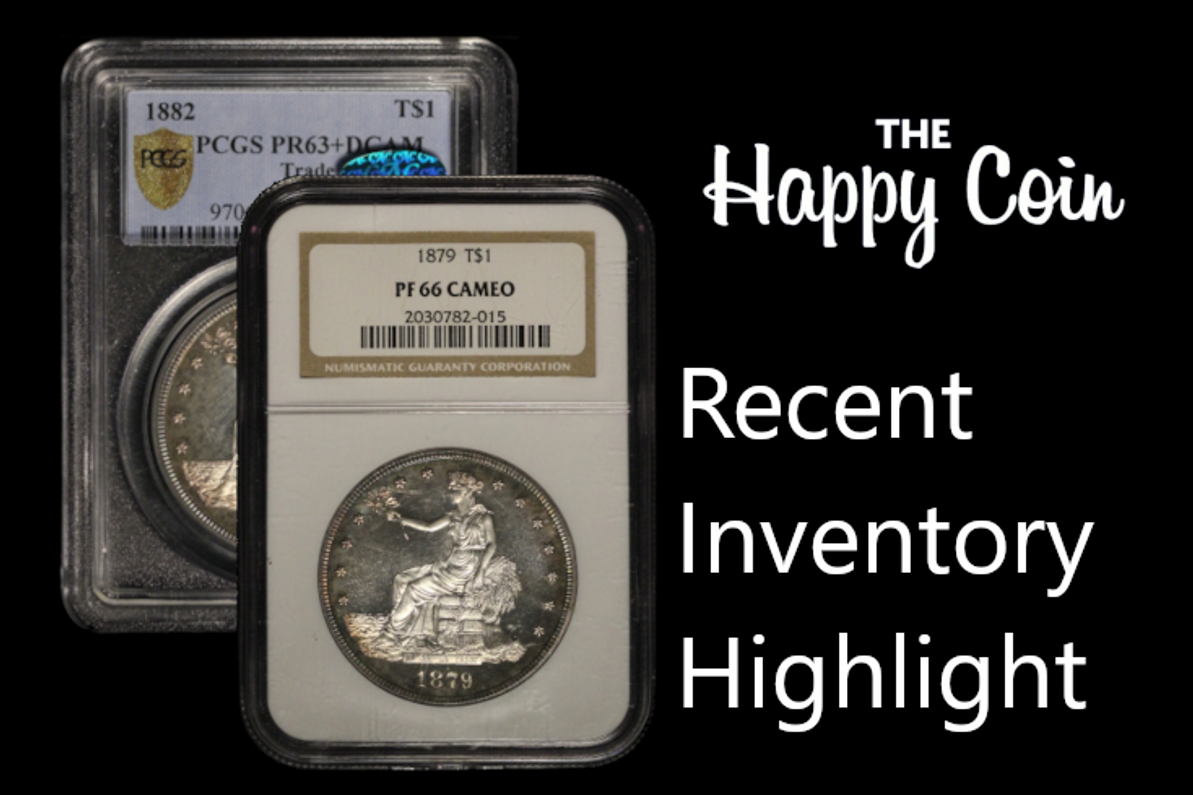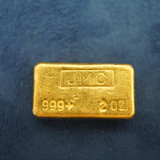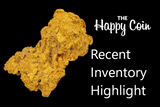Recent Inventory Highlight: 1879 and 1882 Proof Trade Dollars
We recently purchased Proof Trade Dollars from 1879 and 1882, graded by NGC and PCGS respectively. There has already been a lot of interest with these coins and we would like to take a moment to shed some light on why exactly proof trade dollars are so interesting!
The Trade Dollar has one of the most unusual backstories in U.S. coins. First struck in 1873 under the Coinage Act of 1873 and designed by William Barber, it was never meant to be used in American pockets. Instead, it was created to compete with the popular Mexican “dollar” (the 8 Reales or Peso) in Asian markets, especially in China, where the U.S. was trying to expand its world trade.
To stand out overseas, the Trade Dollar was made slightly heavier than the standard silver dollar at about 420 grains (1.8% more) with its silver content boldly stated on the reverse: “420 GRAINS, 900 FINE.” This was a strategic move to build trust with foreign merchants, who were very particular about silver purity and weight.
The coin’s design reflected America’s commercial ambitions. On the obverse, Liberty is seated on a bale of goods, holding an olive branch, with a sheaf of wheat behind her and the sea stretching out in front - a clear symbol of peaceful international commerce. The reverse features an eagle with outstretched wings, gripping three arrows and an olive branch, with “UNITED STATES OF AMERICA” and “TRADE DOLLAR” circling it.
While they were intended solely for export, Trade Dollars were briefly declared legal tender in the U.S. During that time, large numbers of these coins made their way into domestic markets, but with no marked face value and unfamiliar looks, they created confusion and frustration. Many businesses refused to accept them. As a result, Congress revoked their legal tender status in 1876, and public trust in the coin plummeted. Still, they continued to circulate unofficially for years. In 1887, the law that had created them was finally repealed, and the Treasury even offered to redeem undamaged Trade Dollars still in the public's hands.
With the coin unofficially out of circulation, the Mint began producing Trade Dollars only as Proofs, exclusively for collectors. These weren’t coins meant for trade or circulation. They were struck multiple times on polished dies, giving them a mirror-like finish and crisp, detailed reliefs. Mintages were extremely low, often in the hundreds or low thousands, making these coins rare right out of the mint.
What makes Proof Trade Dollars so special today is a mix of scarcity, craftsmanship, and mystery. For example, coins dated 1884 and 1885 exist, but their origins are debated. Most experts believe they were unauthorized restrikes, possibly made by Mint employees, which only adds to their mystery and collector value.
Beyond their rarity, these Proofs represent some of the finest coin minting of the era. They offer a glimpse into how the U.S. Mint combined artistry with precision during the late 19th century. For collectors, owning a Proof Trade Dollar isn’t just about silver content, it’s about holding a piece of international economic strategy, controversy, and a ton of history in the palm of your hand.
You can find our listings here on eBay. Check them out!
https://www.ebay.com/itm/177199984148
https://www.ebay.com/itm/187339768397
Recent Posts
-
The Happy Coin's Winter Holiday Sale - 10% off select eBay items!
Happy Holidays! The Happy Coin's Winter Holiday Sale is back! For the 2025 holiday season, nearly a …Nov 27th 2025 -
The Incredible Value Density of Gold
A zoomed-in picture of a 2 troy ounce .999+ gold bar. A picture of a 100 troy ounce .999+ silver …Nov 21st 2025 -
Discover Our Prized 243-Gram 23K Gold Nugget
Gold coins and handmade jewelry can often highlight skillfull craftsmanship and the exquisite beauty …Aug 29th 2025




